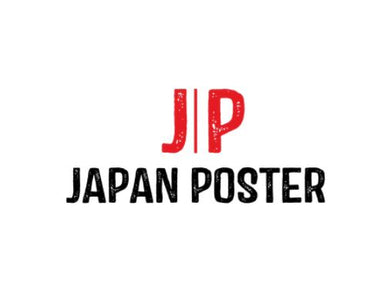The Origin of a Legend: Godzilla 1954, Godzilla Raids Again 1955
The Origin of a Legend on Paper: Godzilla (1954) & Godzilla Raids Again (1955)
Original Japanese B2 posters, speed posters / press sheets, and the 1954 B5 program


Why these two titles matter
In November 1954, Toho released Ishirō Honda’s Gojira, a film that invented the grammar of modern monster cinema. Honda, producer Tomoyuki Tanaka and special‑effects pioneer Eiji Tsuburaya combined a radioactive fable with revolutionary suitmation and miniature work, setting the template for Japan’s tokusatsu industry. The film premiered in Nagoya on 27 Oct. and opened nationwide on 3 Nov. 1954; two years later the Raymond Burr re‑edit, Godzilla, King of the Monsters!, brought the creature to U.S. theaters. Today the franchise is recognized by Guinness World Records as the longest‑running film series in history.
The film’s anti‑nuclear core was no abstraction. Just months earlier, fallout from the Castle Bravo H‑bomb test blanketed the Japanese fishing boat Daigo Fukuryū Maru (Lucky Dragon No. 5)—an incident that haunted Honda’s imagery and fueled the film’s metaphor of a man‑made catastrophe turned against its makers.
On the heels of its success, Toho hurried a sequel: Godzilla Raids Again (1955), directed by Motoyoshi Oda. It introduced Anguirus, staging the series’ first monster‑versus‑monster clash in Osaka, with Osaka Castle engulfed in flames—an iconography seared into Japanese posters of the era.
⸻
Our holdings & what makes them special
1) GODZILLA (1954) – original B2 posters
• Style A (SOLD): the classic vertical layout with enormous red ゴジラ logotype, jets streaking across the sky, and the principal cast anchored at lower left—among the most famous movie‑poster designs of the 20th century.
 • Style B / Chihōban regional variant (IN STOCK): far scarcer; Godzilla rampages through Ginza, atomic breath slashing diagonally as a panicked bystander dangles from the monster’s chest—an image repeated on period ephemera. Our exact sheet has been widely re‑used online and on merchandise; look closely at the lower inscriptions and you’ll spot the match.
• Style B / Chihōban regional variant (IN STOCK): far scarcer; Godzilla rampages through Ginza, atomic breath slashing diagonally as a panicked bystander dangles from the monster’s chest—an image repeated on period ephemera. Our exact sheet has been widely re‑used online and on merchandise; look closely at the lower inscriptions and you’ll spot the match.

• Speed posters / press sheets (SOLD): theater‑ready display sheets used to announce showtimes; graphics reprise the Ginza inferno motif.

• Original B5 program (pamphlet) (IN STOCK): features stills and production notes echoing the film’s civil‑defense framing and scientific gravitas.

Why collectors chase these: When Gojira was made, no one anticipated a 70‑year, 30‑plus‑film juggernaut. Print runs were modest; outdoor display was hard on paper; survival rates are low. First‑issue B2s—especially Chihōban variants in excellent condition—are museum‑worthy and investment‑grade.
Design notes & translations (1954):
• The yellow side copy on some designs reads: 「凄絶驚異!死の放射能を吐く古代の怪獣ゴジラ!!」 — “A ghastly marvel! Godzilla, the ancient monster that spews deadly radiation!!”
• Layout cues—flame‑washed skies, fighter jets, and the massive blocky ゴ・ジ・ラ—broadcast urgency at marquee distance and helped cement the logotype that Toho still uses.
⸻
2) GODZILLA RAIDS AGAIN (1955) – original B2 posters
• Style A (EXCELLENT, unrestored): Godzilla and Anguirus battle amid Osaka—billowing fires, civil defense lines, and portraits of the leads across the footer.

• Style B / Chihōban (IN STOCK): alternative composition with differently placed credits and combat tableau; printed for regional distribution.

• Speed poster / press sheet: bold red title bars and still‑montage—used at theater entrances and transit approaches for showtime announcements.

Design notes & translations (1955):
• Blue campaign copy trumpets: 「怪獣ゴジラ対新登場の暴龍アンギラス 日本全土狭しと暴れ廻る驚天動地の巨篇!」 — “Godzilla vs. the newly arrived raging dragon Anguirus—an earth‑shaking epic as they rampage across all Japan!”
Why the second film differs: Oda’s sequel accelerates the pace and foregrounds spectacle and aerial pursuit, trading some of Honda’s mournful Hiroshima‑echoes for kaijū‑vs‑kaijū action—a formula that would define much of the Showa era.
⸻
Film‑history context
• Tokusatsu & suitmation: Tsuburaya’s miniature cityscapes and heavy latex suits created a new production language; scholars credit Gojira and Tsuburaya with establishing the template for Japan’s special‑effects cinema.
• Anti‑nuclear allegory: Producer Tanaka called the theme “the terror of the bomb,” while Honda staged Tokyo’s destruction with documentary severity—imagery shaped by the Lucky Dragon fallout.
• International trajectory: The U.S. version (1956) localized the film around Raymond Burr; it was this cut that introduced generations of American viewers to Godzilla.
• A living franchise: From Showa to Heisei to Reiwa eras, the series continues (including the award‑winning 2016 Shin Godzilla and 2023’s Godzilla Minus One), fulfilling Guinness’s designation as cinema’s longest‑running franchise.
⸻
Collecting notes
• Format: B2 (approx. 51 × 73 cm) one‑sheet size used for front‑of‑house and street display in Japan.
• Chihōban (地方版): regional‑variant artwork/printing created for local markets—often in smaller numbers than the national main style, hence their rarity today.
• Scarcity & condition: Nearly 70 years on, intact, unrestored first‑issue posters are scarce; survivals with rich, unfaded colour and minimal handling are prized by collectors and institutions.
⸻
Our point of view
We believe these 1954–55 designs sit at the apex of Godzilla paper: iconic compositions, historic authorship, and proven cultural weight. When investing in Japanese posters, chase the best of the best—first‑release B2s (especially Chihōban), speed posters/press sheets, and original programs. Pieces like our 1954 Chihōban are not just wall art; they’re primary documents of the moment cinema’s most enduring monster stepped onto the world stage.
Images shown are the exact items referenced.
Authenticity guaranteed; conservation notes available on request.


